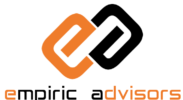I usually ask myself on whose authority we have certain months dedicated to specific causes. In the safety profession and fire safety to be specific, October is often designated as World Fire Prevention Month. Upon some light research, I discovered the origins of this trend to be in commemoration of the Great Chicago fire of 1871. This inferno persisted from 8th to 10th of October killing approximately 300 people and rendering 100,000 homeless. The damage at the time was estimated at 222 Million US Dollars which currently translates to 4.5 Billion US Dollars. To put this figure in context, the most expensive infrastructure project in Kenya, the SGR cost 3.6 Billion US Dollars.
Locally, we have had our fair share of fire disasters. The earliest documented fire disaster I’ve come across is the Faza settlement Fire in Lamu. This occurred in 1586 when the Portuguese punished the residents for collaborating with the Turkish settlers. Fast forward to 2009 when we saw two accidental fires occurring days apart.
It was Wednesday 29th January 2009 in the afternoon, when a power outage would affect the Central Business District. A generator in Nakumatt Downtown would then roar to life providing the establishment with the much needed electrical energy. It is alleged that the generator malfunctioned and the resulting sparks led to the ignition of the diesel stored within the generator room. This fire spread quickly and it took the fire fighters over 24 hours to get it under control. The disaster led to 29 confirmed deaths and 47 Missing persons.
Three days later another disaster followed. In what started as a road accident with no fatalities, quickly morphed into a tragedy that would eventually claim more lives than the Nakumatt Downtown fire. A fuel tanker ferrying 50,000 Litres of unleaded petrol to South Sudan overturned. As it had happened many times before during accidents, residents in Shachangwan scrambled to the scene to help with rescue operations and thereafter salvage the resulting spoils. With no injuries reported from the accident and the value of the commodity in transit, the locals were quick to siphon the petrol from the tanker. Before long, the tanker burst killing 123 people, 98 of who were burnt beyond recognition.
The above serve to highlight how quickly a fire can go from a small flame to an uncontrollable inferno. It is therefore important for members of the general public to have some basic awareness of how fires start and spread. A fire conscious society will be able to appreciate the importance of fire prevention practices and cooperate with authorities to keep the fire safety infrastructure functional. I believe every adult in our nation should at the very least be aware of the following;
Basic Definitions:
· Fuel: In fire safety a fuel is ANYTHING that can catch a fire. e.g. Paper, wood, Petrol · Heat: It is what starts/ignites a fire e.g. Flame, Sparks
For a fire to occur, there has to be a source of heat, something that can burn and finally Oxygen gas, the part of air that supports burning. These 3 elements are referred to as the fire triangle. Remove any one of the elements and a fire will not occur. This is the basis of fire prevention, keep items that can burn (Fuel) away from heat sources that can ignite them.
In the event a fire occurs it is important for the general public to know how to make use of available extinguishers to put out the fires. This is going on the assumption that a fire safety professional was consulted before installation of such equipment so as to match the class of fire to the best suited extinguishing agent.
The principal of using a portable extinguisher is summarised in an easy to remember acronym, “PASS”.
Evacuation is also an important element of fire safety. The general public should know the importance of maintaining passage ways clear of obstruction. Fire rescue drills should be normalised especially in the urban areas to raise the fire safety profile of the average Kenyan.
The central government has done a lot to promote fire safety in the Workplace by creating legislation to which all workplaces are required to comply. This is the Factories And Other Places Of Work (Fire Risk Reduction) Rules 2007. County governments also have by laws that aim to promote fire safety. The missing link as mentioned before lies in constantly sensitizing the general public, a majority of whom are in informal employment. Fires, like most emergencies, seem to creep up on us. However the signs of an imminent disaster are usually easy to recognise beforehand.
I take it as a challenge for myself and extend it to all safety professionals to spread the basic principles of fire safety to members of the communities we are a part of.
We can start by distributing this article outside the safety profession circles. Lastly, share your ideas and personal initiatives for creating awareness on fire safety in the comments section.
Fire safety literacy is an essential skill in any organized society.
References
EKISA, P. O. (2018). AN ASSESSMENT OF THE NATUREOF PREPAREDNESS AND RESPONSETO HAZARDS IN KENYA – A FOCUSON FIRES, FLOODS AND EPIDEMICS. Kakamega: Masinde Muliro University of Science & Technology.
First Alert. (2020). Fire Prevention month 2020. Retrieved from First Alert: https://www.firstalert.com/community/safety-corner/fire-prevention-month/
Owaahh. (2014). 7 Most Destructive Fire Disasters in Kenya’s History. Retrieved from Owaahh: https://owaahh.com/7-most-destructive-fires-in-kenyan-history/








